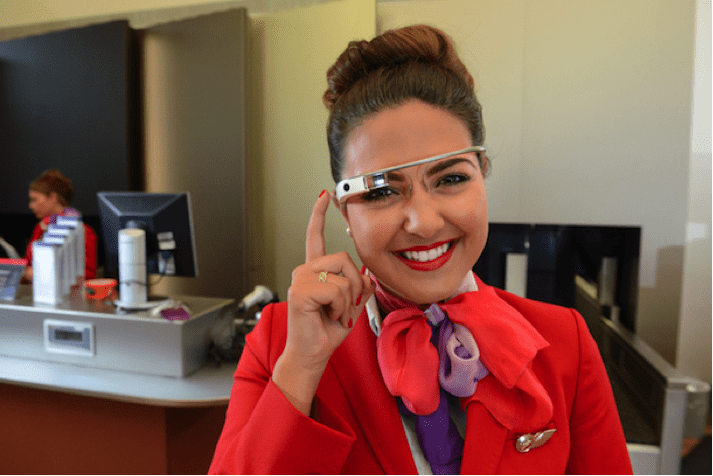This post was originally posted at Wearable World News and can be found here.
—
So often we think of wearables as consumer devices, but in many ways the enterprise is actually defining the utility of this technology at scale. Today we’re seeing businesses adopt wearable technologies to drive highly context-specific communications, intelligence, and efficiency all while empowering and freeing up their workforces [and their hands]. From floor associates to neurosurgeons to law enforcement to field technicians and engineers, following are four of the primary business use cases we’re seeing today.
Use Cases Underscore Wearables as an Emerging Enterprise Communications Platform
1. Service Automation
The primary use case for wearables used in business is to assist with customer or product service, conserving precious time or evading dangerous environments by keeping hands free. Think headsets or eyewear, but connected, and potentially with sensors in the hardware to detect location, movement, or other metrics. Information highly specified to the worker’s context is served to enable him or her to best interact with any service situation. Examples of service automation leveraging wearables include:
- Real-time information delivery for sales and customer service agents
- Service technicians receiving schematics via audio or video conferencing to aid in on-site repair
- Remote control and repair of machinery, medical devices, or other products/infrastructure in high risk environments
One customer-facing example of this comes from Virgin Airlines, which recently tested a pilot on how connected eyewear could improve customer experience upon airport arrival. As Glass-clad agents approach customers, they are shown the traveler’s name, flight, loyalty information, destination, and weather conditions at that destination. Agents can assist customers right then and there with anything they may need. “You get the right information about the right person at the right time,” touts Stephane Cheikh, the project manager of the pilot, which was later expanded.

2. Communication & Collaboration
Another use case of wearables in the workplace—a very clear extension of the impact of cloud, social, and mobile—is the ability for increased communications and collaboration. Businesses can deliver necessary information to employees more quickly than ever before, piping in instruction, notifications, requests, news, etc. Employees themselves can also communicate more easily—think smarter, more connected walkie-talkies or headsets. Applied, examples of this include:
- Employee-to-employee/partner/affiliate training via information, photo, voice-sharing
- Truck driver (or any field worker) able report back information (e.g. inventory, infrastructure, delivery) more efficiently
- Surgeons and staff communicating during surgical procedures
Retailer, The Container Store recently replaced its walkie-talkie system with Theatro, a wearable in-store communications device clipped to employees’ shirts. The device enables one-to-one communication, one-to-group, broadcast, store-to-store, store-to-HQ, messaging, and announcement features, as well as in-store location services and reporting. TCS has reported a 20 percent increase in employee communication (compared to walkie talkies), and a 60% decrease in the number of messages heard personally—filtering out the noise to drive more efficient response times for requests.
3. Emergency
Certainly a type of communication,emergency communications is another use case for wearables in the enterprise. Through the inherently mobile nature of wearables, both employee and employer are equipped with the ability to report hazards, trigger emergency responses, and even prevent potentially dangerous situations via wearables. Examples of this might include:
- Alerting doctor of patient emergency
- Alerting field worker of impending geological or weather event
- Law enforcement able to send and receive calls for support
Examples of emergency alerts are not hard to imagine, as exemplified in this image of the APX Skylight software platform (which is designed to push cross-system corporate data to wearables).
4. Employee & Location-Tracking
Another use case leveraging the technology (e.g. sensors, video) of wearables surrounds location-tracking and/or providing direction. Employers might use wearables to track the general traffic, location, or performance of employees. Employees might use wearables to provide direction and navigation to a desired location, say through a warehouse to find a specific product. Examples of this use case include:
- Hospitals tracking nurse rounds in a particular unit
- Manufacturers tracking employee movement across warehouses as employees use headset or glasses for real-time navigation within a facility or out in the field
- Performance tracking for performance review; corporate wellness program tracking.
Caprotti’s Sandwhich Shop is a Las Vegas-based deli chain, which is using Google Glass to help derive insights (around rushes, wait time, orders, employee performance, etc.). “It’s also expanded how we film training videos by freeing up our hands to demonstrate the proper way to make sandwiches and give the viewer a first-person perspective… it’s given us an opportunity to review and critique managerial performances in a whole new way,” explains Jason Smylie, CIO/CMO of Caprotti’s.
Another example from APX’s Skylight software shows how smart glasses will help workers navigate facility floors in real-time.
Businesses may Set the Tone for Mass Wearable Adoption
Hands-free, face-forward technology impacts how work is done; how people make decisions and how they interact with customers, partners, and other employees. Some believe the enterprise may in fact lead wearable adoption en masse, in the way the BlackBerry phones ‘warmed us up’ to the convenience and culture of smartphones. While challenges facing wearables (e.g. privacy, budget, education, hardware lifecycle, and social norms, etc.) are very real, “in the enterprise, there’s less resistance to wearables. They are seen more as a tool, not a nice-to-have,” explains Brian Ballard, CEO of Wearable Software platform APX.



